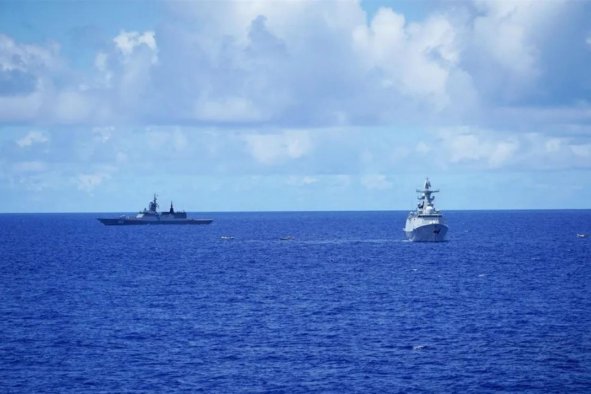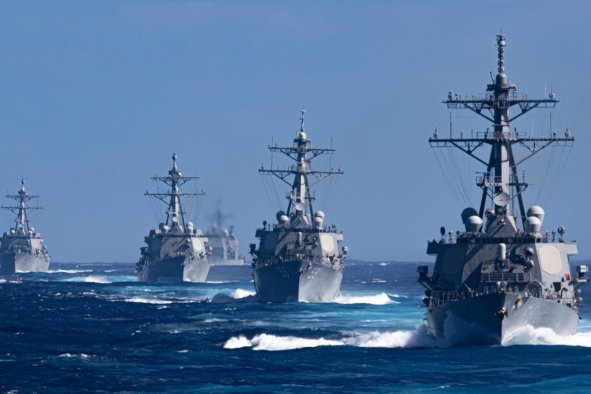A rough map released by a pro-Kremlin blogger on Sunday purported to show how a formation of Russian and Chinese nuclear-capable bombers circled the U.S. coast off Alaska last week.
The Rybar military channel on Telegram suggested the two Russian Tu-95MS and two Chinese H-6K strategic bombers took off together from Anadyr airfield in Russia's eastern Chukotka region, which would mark the first time assets from both air forces have shared a base of operations.
U.S. and Canadian fighter aircraft under the direction of the North American Aerospace Defense Command intercepted the air group late on July 24 inside the Alaska air defense zone. The activity was "not seen as a threat," NORAD said.
U.S. Defense Secretary Lloyd Austin said the air patrol—the first time Chinese warplanes had approached Alaska—came within 200 miles of the U.S. coast, presumably in the Bering Sea. He said the joint operation was "not a surprise."
After yet another sign of military cooperation between Beijing and Moscow, Russia's state television was bullish about the pointed maneuvers, and Rybar, the military blogger, called for the patrols to be regularized.
Russia's Defense Ministry later released footage of what it said was a five-hour patrol in the Chukchi and Bering seas in the North Pacific, escorted by Russian Su-30SM and Su-35S jets.
Rybar's post, however, suggested the activity took place in two parts, with NORAD aircraft—U.S. Air Force F-16s and F-35s and Canadian CF-18s—scrambled to intercept the air group north of Alaska's Aleutian Islands.
The mixed-use Anadyr military airfield has long been a staging ground for long-range aviation units including the Tu-95MS. The blogger's map indicates Russia's cruise missile bombers were flown there before the mission, likely from Ukrainka air base in the Amur region bordering China.
And while there was little information about the Chinese long-ranger bombers involved in the now annual air drill, the planes could have been dispatched from the mixed-use Anqing air base, where is located an H-6K aircraft division, under the Chinese military's Eastern Theater Command.
In a more detailed release on Monday—the first since NORAD's initial announcement—the Alaskan Command said the air intercept mission was carried out by aircraft from Eielson Air Force Base and Joint Base Elmendorf-Richardson.
Air defense identification zones, or ADIZ, are not considered sovereign airspace, but the self-declared areas—found extensively in Asia—are used to identify and control approaching foreign aircraft.
The Tu-95 and H-6 bombers were escorted "over international waters until they exited the ADIZ," the statement said.
"The vastness of Alaska brings unique challenges when it comes to ensuring the United States and Canada are defended," Maj. Brent Rist of the 18th Fighter Interceptor Squadron at Eielson was quoted as saying.
"To put things into perspective, it's similar to fighter jets taking off from Denver to protect D.C. and then fly back. This distance exposes all assets to complex scenarios and risk, especially with weather in Alaska," Rist said in the Alaskan Command release.
The command said the intercept was supported by a number of other assets including airborne early warning and refueling aircraft.
The Russian and Chinese defense ministries could not be reached for comment after hours. Last week, both governments said the joint training did not target any third party.
Disclaimer: The copyright of this article belongs to the original author. Reposting this article is solely for the purpose of information dissemination and does not constitute any investment advice. If there is any infringement, please contact us immediately. We will make corrections or deletions as necessary. Thank you.




